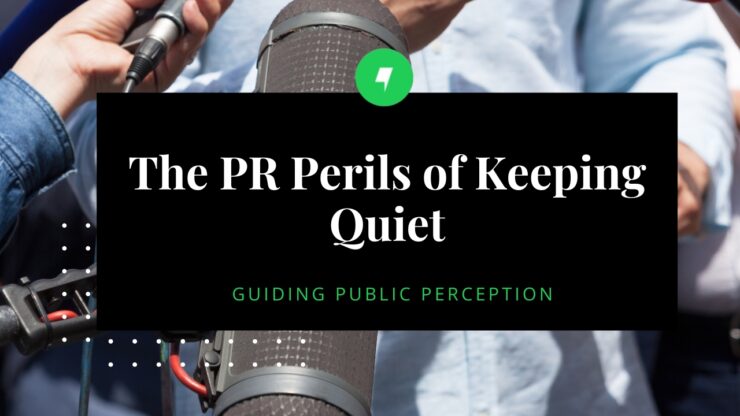In the fast-paced world of public relations, every statement or action, or lack thereof, matters. From crafting the right message to timing its release just right, PR practitioners are the maestros of a complex orchestra, guiding individuals and organizations through the fast-paced symphony of public perception. Two very important elements in this symphony are frequency and transparency. Ignore one, and the whole piece sounds flat.
The Royal Family has provided us with a perfect case study in the perils of keeping quiet and the quick and often harsh response from the public in such a situation.
Christmas Day 2023 was the last day Princess Kate Middleton was seen in public. Soon, news broke that Middleton had been taken to the hospital for abdominal surgery. Rather than provide further information or manage the narrative, the Royal Family’s PR team opted for silence, resulting in a very predictable whirlwind of speculation and false information.
For many PR professionals, this scenario harks back to the fundamental lessons taught in many of our college PR classes. Through dissecting the intricacies of public officials, public figures, and private individuals, we learn the unique communication challenges each category faces. Public figures, like Middleton and the Royal Family, carry immense influence, and their every move is closely studied.
In the face of relentless media attention, the decision to withhold updates may have seemed prudent. After all, Middleton’s health is a deeply personal matter, deserving of privacy and respect. However, the repercussions of silence as a public figure of her stature should not have been underestimated.
By refraining from providing even a basic holding statement, the Royal Family inadvertently fueled rampant speculation. Wild rumors and unfounded theories spread like wildfire across traditional media and social media platforms, painting inaccurate assumptions of what was happening. In the absence of clear communication, conjecture filled the void and created false narratives.
While the instinct to shield Middleton’s privacy is understandable, a more strategic approach could have mitigated most of the false narratives. By simply sharing a statement acknowledging that Middleton was facing a further health issue and assuring the public of forthcoming updates, the Royal Family could have better owned the narrative, quelled the false rumors and demonstrated their commitment to transparency. Within the Royal Family, this approach would have potentially ended Middleton’s need to alter an image to prove she was okay.
In contrast, there are many companies who have harnessed the power of transparent communication in times of crisis, faring much better. The holy grail of such a situation is the 1982 Johnson & Johnson Tylenol crisis, when seven people died after consuming cyanide-laced capsules. Rather than downplaying the severity of the situation or remaining silent, Johnson & Johnson took swift and decisive action. They immediately recalled 31 million bottles of Tylenol, cooperated fully with law enforcement, and implemented tamper-resistant packaging, setting the gold standard for crisis management. Their transparent communication and commitment to consumer safety not only restored public trust but also cemented Tylenol’s reputation as a responsible and trustworthy brand.
In PR, speed, accuracy and adaptability are key. Each situation demands a tailored approach, balancing the need for privacy with maintaining the public’s trust.
As PR practitioners, we must remember that in the age of instant communication, the absence of information or waiting too long to share transparent information can speak volumes.
Posted In Crisis Communications, Media Relations, Public Relations
 Veronica Mikitka Reed
Veronica Mikitka Reed 